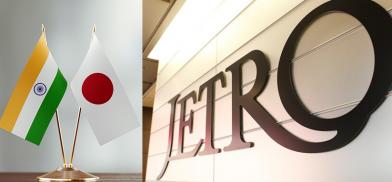India's digital talent can be harbinger of new direction in Japan-India cooperation
Hamstrung by the shortage of digitally skilled hands, Japan needs to rope in digital talents from India that constitutes one of the biggest digital talent pools, writes S. Majumder for South Asia Monitor

Surprisingly, Japanese investment in India plummeted in 2020 against the spurring growth in investment by the world's rich nations like the US, Singapore and the UK. In 2020, Japanese investment in India fell by more than 60 percent, compared to an over 297 percent increase in US investment. It was followed by Singapore – the biggest foreign investor - with an increase of 25.7 percent and the UK at 45.9 percent.
Why has Japan acted differently? Is it because of the Covid-19 impact on the Indian economy, which posted over 7 percent negative growth in GDP in 2020-21, or the rise in protectionism?
The US adopted a new pattern of investment to win over the pandemic. It splurged investment in the digital economy which works well during pandemics. But Japan refrained from any such new investment model during the pandemic. It preferred to restrict itself to supply chain connectivity, which is its core business activity in Asia, to reap the benefits of low-cost manufacturing.
Japan’s supply chain connectivity
The Association of Southeast Asian Nations (ASEAN) and China act as pivots to Japanese supply chain connectivity. They are linked to both procurement of raw materials and parts, as well as export to the region. The majority of raw material and parts suppliers for Japanese companies in Asia and Oceania are located in the ASEAN, China, South Korea, and partly in India. According to a JETRO survey, over 85 percent of the procurement of raw materials and parts for Japanese affiliates in ASEAN and Oceania comes from these nations.
The important export markets for Japanese affiliates in Asia and Oceania are ASEAN, China and South Korea. The two nations and ASEAN account for 75 percent of the market for Japanese affiliates located in South Korea and Thailand. ASEAN, China and South Korea are both important sources for procurement of raw materials and parts as well as export markets for Japanese affiliates
ASEAN and China are the hotbeds for Japanese investors in Asia. Even though Japanese investment in these areas went down during the pandemic, the magnitude of the fall was lower than in India. Japanese investment in ASEAN and China dropped by 34.4 percent and 7.5 percent respectively in 2020 on a year-on-year basis.
Japan's reduced investment in India
Against these, Japanese investment in India collapsed by over 60 percent during the same period. This came against the backdrop of India emerging as a strong challenger to Thailand in the preceding year.
In 2019, Japanese investment in Thailand was marginally higher by 5.5 percent than in India. But in 2020, Japanese investment in Thailand shot up to four times higher than in India. One reason could be the re-shoring of Japanese investment from China to Thailand, in the event of a large Japanese government incentive to decouple from China.
Given the strong networks of supply chain connectivity, it was an uphill task for the Japanese investors to outdo the supply chain connectivity and shift to a new investment model. Japanese investors were also enthralled by the big hope to reap the benefits of RCEP (Regional Comprehensive Economic Partnership) and other Free Trade Agreements in Asia. They provide a higher potential to strengthen supply chain connectivity.
RCEP, the biggest multilateral FTA comprising 15 members - ten ASEAN constituents and China, South Korea, Japan, Australia and New Zealand - is scheduled to be in force in January 2022. It represents approximately 30 percent of global GDP. Intra-RCEP trade accounts for 40 percent of the members' total trade.
Where Japan can count on India
Demand for digital services increased rapidly with Covid 19 related lockdowns to reduce human contact. US investors were allured by India, which has the potential to provide a USD 1 trillion digital market by 2025. India is the world’s second-largest nation both in terms of the number of internet connections –now nearly half a billion - and the number of smartphone users, thereby emerging as a global leader in the digital economy.
Japan’s rate of increase in digital transformation is slower than that of the US, China, the EU, South Korea and even India, according to Mckinsey survey.
One of the reasons for the slow Japanese pace was the lack of adaptability to digital transformation. They do not feel that they are sufficiently prepared for digital transformation. The barriers, which restricted Japan’s digital transformation, were the lack of digital talents and understanding among the senior corporate managers.
The survey focused on the cultural entrenchment of the senior managers (such as seniority by age, lifelong employment in one company) that deflated the understanding of the significance of the digital economy. Eventually, the lack of support from the senior managers impeded digital transformation in Japan, according to the survey.
Hamstrung by the shortage of digitally skilled hands, Japan needs to rope in digital talents from India that constitutes one of the biggest digital talent pools. India has a nearly 1.17 million digitally skilled employee base, according to NASSCOM. The Japanese government has eased visa rules in April 2019, and this should be the harbinger of a new direction in India-Japan investment and economic cooperation.
(The writer is a former adviser, Japan External Trade Organization (JETRO), New Delhi. The views expressed are personal. He can be contacted at subratamajumder0604@gmail.com)









Post a Comment